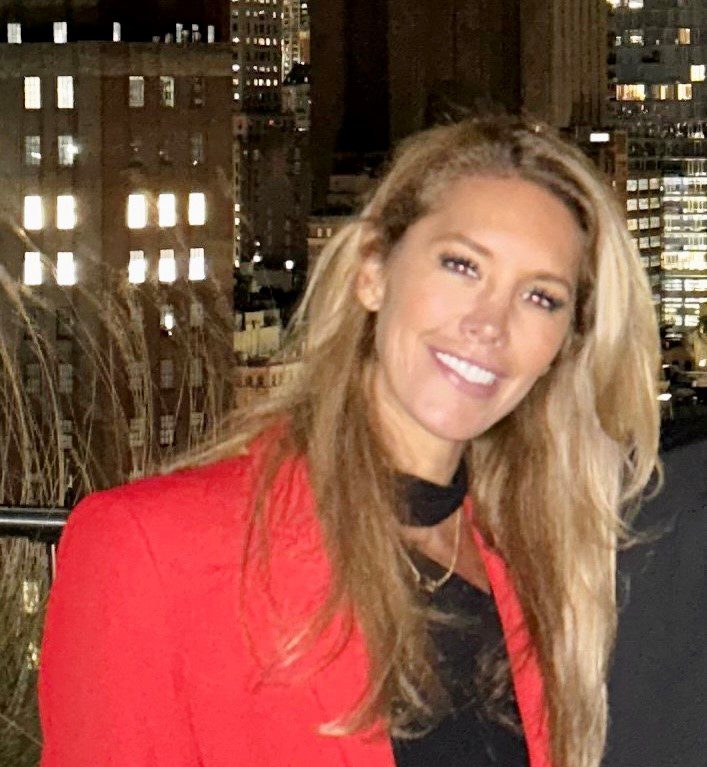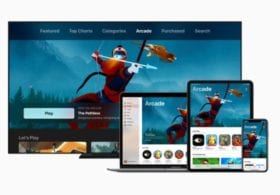
 Long gone are the times when OOH advertising meant a static billboard. Today’s OOH advertising category includes digital signage that can be changed as rapidly as the weather and brand messaging campaigns that are being further maximized with the utilization of connected TVs, social media, QR codes, programmatic and new spatial capabilities. Julie Radlovic, Group Vice President, OUTFRONT Media National Sales, offers details on just how far OOH has come.
Long gone are the times when OOH advertising meant a static billboard. Today’s OOH advertising category includes digital signage that can be changed as rapidly as the weather and brand messaging campaigns that are being further maximized with the utilization of connected TVs, social media, QR codes, programmatic and new spatial capabilities. Julie Radlovic, Group Vice President, OUTFRONT Media National Sales, offers details on just how far OOH has come.
How is OOH being used differently today than it was 5 years ago?
In the last five years, the OOH industry has evolved to meet the pace of today’s media cycle and the needs of today’s clients by diversifying its role in the media planning landscape and these differences can be categorized within the tenets of Technology, Location, and Creativity (TLC for short):
- Technology
- Audiences and Data – Entertainment brands historically focused their OOH in LA & NY; today they are using audience data to broaden their market base. Whether it is leveraging their first-party data or partnering with us to utilize smartSCOUT, OUTFRONT’s proprietary DMP, brands have evolved their purchase patterns to reach key audiences beyond the top 5 DMAs.
- Digital Capabilities – The rapid expansion of Digital Out of Home (DOOH) has created opportunity for increased creative flexibility in OOH. Whether brands are focused on dayparting, or creating additional relevance through dynamic creative changes, DOOH can accommodate varied flight times and this new level of creative flexibility. DOOH has secured OOH’s place on media plans as conversations have shifted from the feasibility of a campaign, to how much investment will be given to those campaigns.
- Purchasing Power – With the evolution of DOOH in the last 5 years, brands are activating campaigns across programmatic channels via various DSPs (demand side platforms).
- Location
- The power and value of owning a physical location continues to be a key lever in how entertainment companies use OOH. In many cases, entertainment groups are still seeking OOH that delivers big, bold, beautiful, and iconic assets. In an increasingly digital media world, we are seeing a balance of DOOH campaigns supported by location ‘ domination’s (sequential billboards), takeovers and roadblocking in iconic locations in Times Square, station dominations in major transit hubs, and fully wrapped subway trains. The entertainment category, more than any other , has evolved to understand the power of big investments in iconic locations and the organic impressions, traffic, and virality that a location-based strategy returns.
- Creativity
- Across both digital and static formats, the entertainment category is leveraging the creative opportunities OOH affords and helping to push the boundaries on what’s doable at (physical) scale.
- We are seeing more buildouts and creative executions on static inventory – everything from inflatables, lighting executions, props, and more.
- OUTFRONT XLabs, our digital innovation team, has pioneered advanced digital capabilities and entertainment brands have been some of the first to adopt and embrace 3D anamorphic capabilities.
- Across both digital and static formats, the entertainment category is leveraging the creative opportunities OOH affords and helping to push the boundaries on what’s doable at (physical) scale.
How should OOH fit in an advertising strategy?
As the role of OOH in advertising strategies has expanded in recent years, it has become a format that can fit into plans based on a range of KPIs and objectives. There is no one size fits all approach for OOH when it comes to reaching today’s consumers and supporting campaign goals.
- Amplifier of All Other Media – While OOH can be treated independently in planning as part of a campaign’s broader mass reach goals, it should also be considered as complementary to all other media. According to a 2022 Comscore study, dollar-for-dollar, OOH makes the biggest impact on consumer’s digital behavior. Further, OOH drives 5-7X more social and digital activations than any other media format.
- OOH – OOH is the most “instagrammable of all media” according to Rishad Tobaccowala, a Senior Advisor for Publicis Groupe who previously served as the media company’s Global Chief Strategist and Growth Officer. In the entertainment space it is common practice for talent to photograph images of OOH ads- often as a backdrop to a selfie – and share it on their social channels. As a result, there is a massive and measurable opportunity for amplification for the entertainment category using the OOH as core content.
- Targeted IRL Impact – OOH is the only format that allows for hyper-targeted, hyper-local In the entertainment space, we often see targeted, location-based campaigns that support plot lines, vanity-driven activations in iconic locations such as Times Square and the Sunset Strip, and hyper-focused messaging in neighborhoods near a director or actor’s home. Location-driven placements are strategic and designed to drive organic social conversations, press coverage, and stretch budgets by appearing larger-than-life.
- New Digital capabilities – with transit station digital (Liveboards) and in train cars via newly-launched digital (Livecare MAX) there will be new opportunities for the entertainment sector to share content – including trailers and content clips in dynamic and engaging ways.
- Low CPMs for Digital Efficiency – OOH provides mass reach with lower CPMs than most other media formats. DOOH provides efficiency at scale within a brand’s digital budgets allowing the dollars to stretch even further while they continue to drive impact and reach.
- OOH is Brand Safe – as brands shift dollars away from certain media platforms due to diminishing audiences, and concerns around privacy, fraud, and brand safety, OOH is the only traditional medium with a growing audience, and is brand safe; and it is a medium that can’t be skipped or ignored.
- Supports Layered Awareness and Acquisition Strategies – In recent years, we’ve seen a new playbook adopted by many entertainment companies. As more competitors have entered the industry with hopes of achieving a substantial piece of market share, we are seeing campaigns with varied creative designed to achieve multiple objectives. In select markets, branding messages blanket the area to drive awareness, but as these brands hope to deepen their presence in outer markets, they focus their creative on single releases and new titles, designed to capture the attention of targeted audiences. Once established, the process is repeated, but the branding campaigns highlight newer offerings and value propositions designed to retain existing customers.
- Long term location contracts (“Perms”) serve as a strong foundation to support broader planning – In Los Angeles and New York, many of the studios, streamers, and tech giants buy high-impact units as a foundation for their coverage in the top two markets. With their high-profile inventory secured in highly-competitive markets, they have guaranteed locations for new releases, enabling these advertisers to focus on strategically placed incremental investments in top markets and across the country throughout the year to support targeted initiatives.
What are some OOH success stories you can share?
How brands define success, particularly as it relates to OOH varies by campaign objective – whether it’s measuring brand lift, tracking organic social engagement and reach, or simply choosing to follow a strategic playbook for a client more than once – following are stories of successful, best-in-class OOH campaigns in the broader entertainment sector.
- PlutoTV Brand Lift Study – PlutoTV saw a 13% lift in brand awareness and 50% of consumers said they would consider watching PlutoTV after being exposed to their OOH campaign.
- Virality that Can Only Happen on OOH – No matter how big the celebrity, stars still have their “I Made It” moments when they see themselves, or their friends, on OOH. For a recent campaign for the show “Power” on Starz, Kim Kardashian found herself in Times Square looking at a larger-than-life image of 50 Cent, a central character in the show. She shared a photo of the campaign on her Instagram and that singular Times Square billboard reached well beyond its location and was subsequently reshared by Kim Kardashian’s millions of followers. For Starz, this was a return on their investment that could only happen organically, and only on OOH. Since then, Starz has continued to ensure high profile assets are a key part of their media plans.
- 3D Anamorphic Creative Inspiration Beyond Streaming – Hulu was one of the first clients to take advantage of OUTFRONT XLabs’ advanced digital creative capabilities by utilizing 3D Anamorphic activations (‘X-Scapes’) ahead of its new series launches. Utilizing over 20+ 3D enabled locations, Hulu has partnered with OUTFRONT to launch such high-profile original series as ‘Westworld’, ‘Only Murders in the Building’, ‘The Orville’, and more. The Hulu activations have since inspired HBO Max and tech-driven entertainment brands such as Amazon to create 3D spatial campaigns as well.
- Wrapped Trains as a Mechanism for Vanity and Reach Entertainment companies are increasingly using wrapped subway trains as a key part of their launch campaigns. In 2022, Paramount+ used a wrapped train for ‘Halo’ and Sony wrapped a train for ‘Bullet Train’, to name a few. These campaigns are often supported by frequency plays such as Liveboards (digital posters) in the stations and on platforms, and ’ station dominations’, as the brands know featuring a wrapped train is sure to trigger conversation, social sharing, and reach New Yorkers and tourists across the full New York City Transit (MTA) network.
- Netflix Bought their Own Billboards – With OOH serving as one of the most important outlets for their advertising efforts, Netflix actually made the ultimate investment in the space by purchasing a major OOH company, allowing them to now own multiple billboards along the Sunset Strip to ensure they had a permanent way to reach consumers with their new content premieres in the most high-profile area of LA.
Julie Radlovic is the Group Vice President and head of national sales on the West Coast for OUTFRONT. Julie has been in the OOH Industry for over 14 years and prior to that spent 10 years in radio sales. She has extensive knowledge and experience partnering with several entertainment brands over the course of her career. Julie resides in Los Angeles, CA with her three daughters and her dog Duke.






